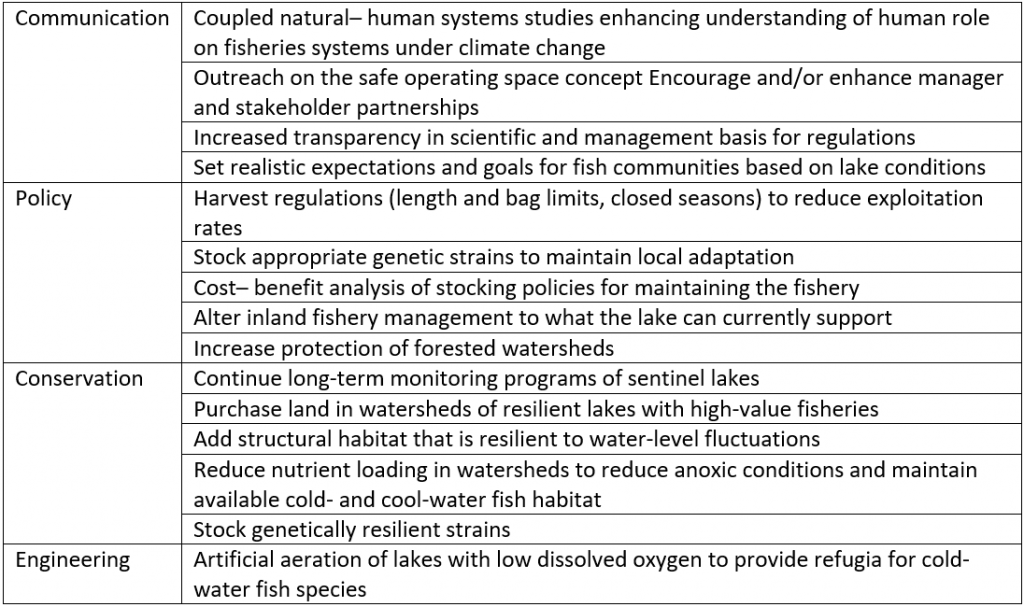Climate change is expected to affect fish habitat in our lakes, but on an issue where international agreements are the gold standard, it can seem overwhelming for state-, local-, and lake-based organizations. To address the challenge, stakeholders in Wisconsin recently met to identify scientific advances and adaptation strategies that they could employ on their lakes. The group convened at the Wisconsin Initiative on Climate Change Impacts lake adaptation workshop in 2018, and recently released the results of their work. Their publication will be part of a Midwest Glacial Lakes Partnership-organized issue in the journal Lake and Reservoir Management focusing on managing fish habitat and fisheries affected by habitat.

The workgroup, led by Dr. Madeline Magee and others, focused mainly on resilience and adaptation to climate change (minimizing effects of climate change taking steps to adjust to those effects) as opposed to mitigation (decreased greenhouse gas emissions). Magee and coauthors concluded that “a holistic approach to climate adaptation for inland lakes includes protecting intact resources, improving the capacity of lakes to return to their prior condition, and accommodation changes while minimizing impacts.” Their results were broken down into four major themes that are affected by climate change: lake levels, water quality, invasive species, and fisheries.
The fisheries theme identified communication, policy, conservation, and engineering strategies. Communications strategies focused heavily on conducting communications that provides a two-way flow of information between practitioners and the public. Policy actions focused on reducing exploitation rates and stocking based on what future habitats will be able to support. A major theme was the conservation of cool- and cold-water habitats with sufficient dissolved oxygen through protective policies, purchases, and land use practices that minimize nutrient inputs to lakes. This strategy has been used in Minnesota to protect their Cisco refuge lakes while benefitting water quality, loon populations, property values, and lake ecosystem health.
Fisheries climate change adaptation actions (Part of Table 1 reproduced from Magee et al., 2019)

The other three themes provided similar lists of actions, which can be found in the publication and are summarized below. The lake level theme identified adjusting user expectations toward a norm of fluctuating water levels, protecting shoreland zones through policy, and a host of more expensive engineering solutions. The water quality theme highlighted outreach and traditional measures to reduce nutrient and stormwater runoff loading through as easements, acquisition, and application of best management practices. The theme also identified a number of engineering solutions, while providing the cautionary note that these engineered solutions may be cost-prohibitive, have negative side effects, and require ongoing application as they don’t treat the cause of the problem. Finally, the aquatic invasive species (AIS) theme identified that climate change is likely to affect all stages of the invasion process and alter AIS management and stressed the importance of resilience to AIS and monitoring programs to understand and rapidly respond to AIS. These results are also available to the public in this summary.
